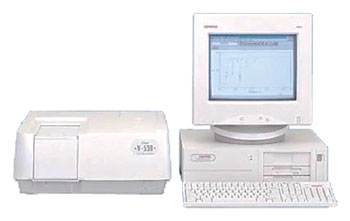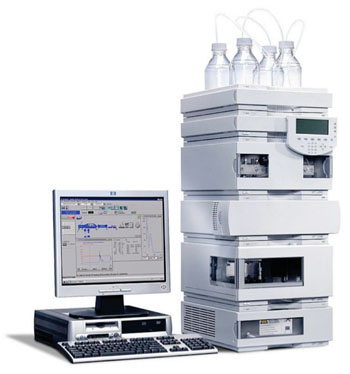Micro-Method Determines Glutathione in Human Blood
By LabMedica International staff writers
Posted on 27 Aug 2014
A new colorimetric procedure has been described for the visible-range spectrophotometric analysis of glutathione (GSH) in microvolumes of blood collected by fingerstick and validated by reliable high-performance liquid chromatography.Posted on 27 Aug 2014
GSH deficiency predisposes to oxidative damage which is thought to contribute to onset and progression of many disease states; while conversely, elevated GSH levels generally confer resistance to oxidative stress as observed in many types of cancer cells.
Clinical biochemists at the University of Siena (Italy) took both venipuncture sample and fingerstick blood samples from 23 healthy subjects, 14 females and 9 males, age range from 27 to 35 years. At screening, they all had normal physical examination and laboratory analyses including blood counts, lipid profile, comprehensive metabolic panel, uric acid, iron, urinalysis and urine electrolytes.
The analysis of GSH in blood collected by fingerstick after processing was measured in the clear supernatant by using a modification of a colorimetric method, using 5,5′-dithio-bis(2-nitrobenzoic acid) , which is also known as Ellman's reagent or DNTB. Reaction between GSH and DTNB was analyzed at 412 nm wavelength by a Jasco UV/Vis 530 spectrophotometer (Easton, MD, USA). Analysis of GSH by HPLC was performed by chromatographic separation performed on a Zorbax Eclipse XDB-C18 column (Agilent Technologies; Santa Clara, CA, USA) absorbance detection was carried out on an Agilent 1100 instrument equipped with a diode detector.
In a group of 23 healthy subjects the GSH content in blood was determined by the micro-method to be 8.54 ± 0.11 nmol/mg hemoglobin. Linear regression analysis of the GSH concentrations determined by parallel analysis of the same samples with the reference HPLC method showed a satisfactory correlation between the two methods. These data indicate that the main feature of the new micro-method is its excellent precision and accuracy for blood GSH.
The authors concluded that the new HPLC-validated procedures for the determination of GSH in micro volumes of blood, that are collected by fingerstick in humans, sample volumes as low as 0.5 μL are suitable for analysis. Being minimally invasive, the fingerstick method can be used to monitor frequently GSH concentrations while avoiding the discomfort and possible adverse events associated with phlebotomy. The procedure is suitable for minimally invasive investigation of oxidative stress in peripheral blood. The study was published on August 1, 2014, in the Journal of Chromatography B.
Related Links:
University of Siena
Jasco
Agilent Technologies














.jpg)
